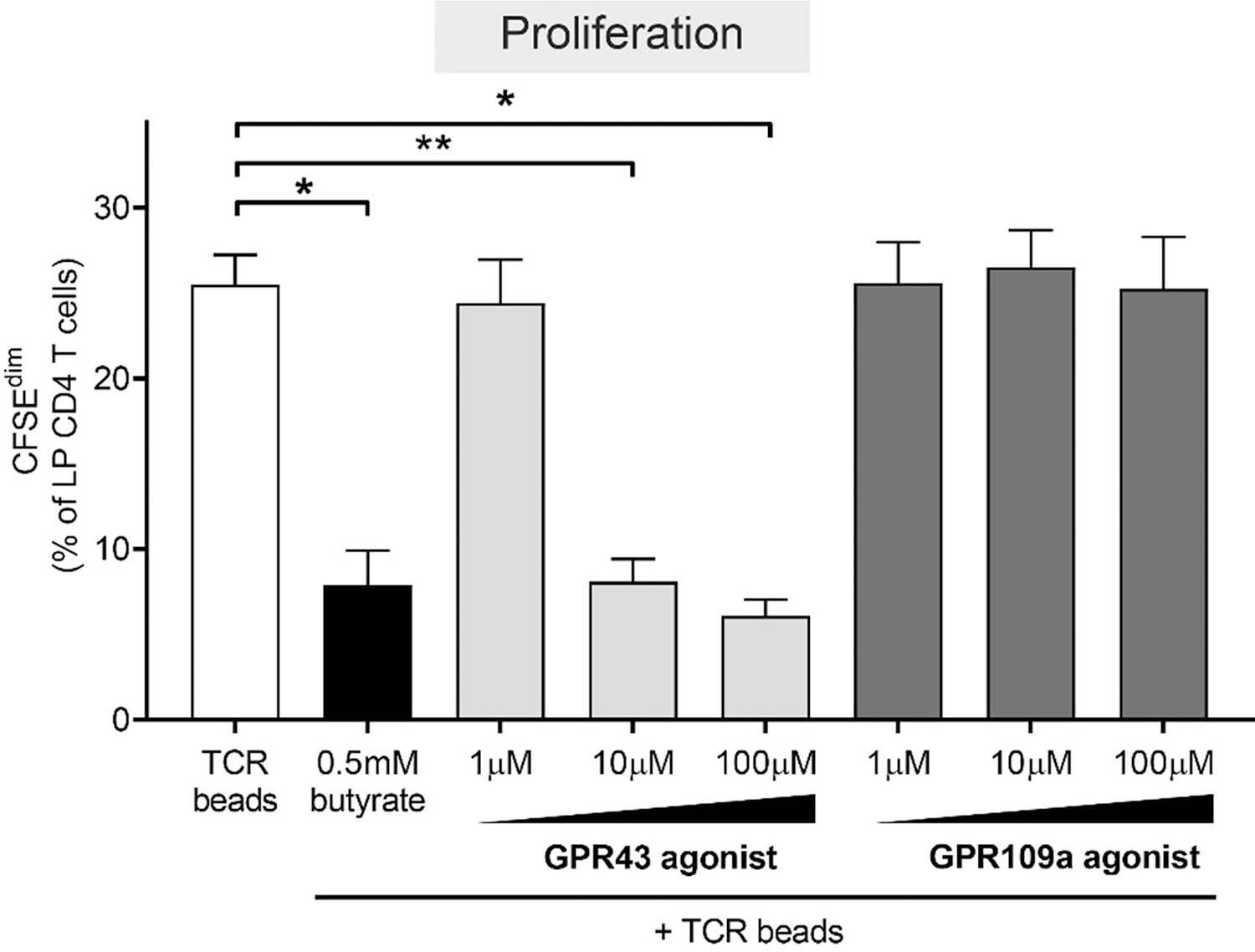Fig. 6.

GPR43 agonist phenocopies butyrate’s ability to decrease LP CD4 T cell proliferation. CFSE-labelled purified LP CD4 T cells (N = 4) were cultured with TCR beads, with or without butyrate (0.5 mM) or GPR agonists (1‒100 μM; N = 3 for 1 μM and 100 μM) for four days and percentages of LP CD4 T cells that proliferated (CFSEdim) determined using multi-color flow cytometry. Values are shown as mean ± SEM of net proliferation (TCR-stimulated minus unstimulated). Statistical analysis: Paired t tests were conducted to determine differences in proliferation between butyrate or GPR agonist concentrations versus no butyrate or GPR agonist conditions. *P < 0.05, **P < 0.01.
